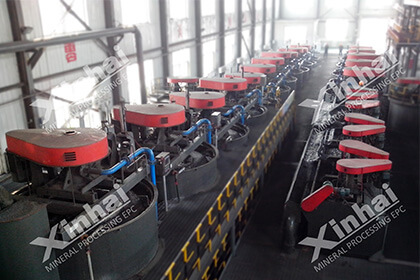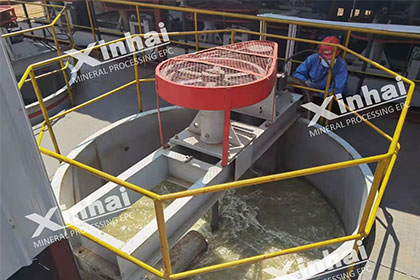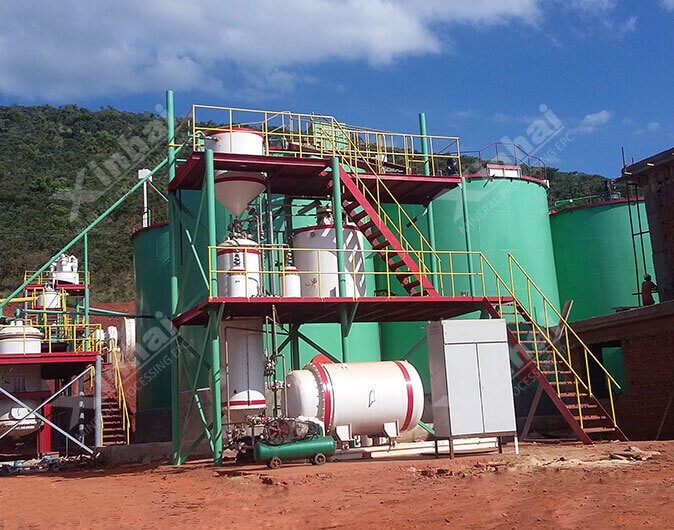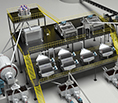Step-by-Step Guide to Placer Gold Mining
 Laura
Laura
 Oct 14, 2025
Oct 14, 2025
 12
12
If you want to know more details about equipment, solutions, etc, please click the button below for free consultation, or leave your requirements!
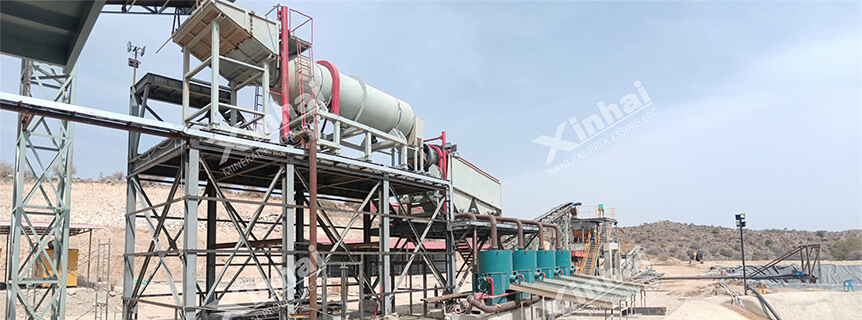
200tph placer gold processing plant in Somaliland
Placer gold mining is a popular method used to extract gold from natural deposits found in stream beds, riverbeds, or other alluvial environments. Unlike hard rock mining, which involves extracting gold from solid rock, placer mining relies on the physical processes of erosion and water flow to concentrate and separate gold from other materials.
In this step-by-step guide, we will walk you through the entire placer gold mining process, from prospecting to extraction, and provide useful tips for both beginners and experienced miners.
What is Placer Gold Mining?
Placer gold mining refers to the process of extracting gold that has been eroded from its primary source (usually quartz veins) and deposited in sedimentary environments like riverbeds or streams. The word "placer" is derived from the Spanish word for "place," and placer deposits are commonly found in the form of gold nuggets, dust, or flakes mixed with sand, gravel, and other sediments.
Unlike traditional hard rock mining, placer gold mining relies on gravity-based methods to separate gold from other materials using water, which is why it's often performed in or near waterways.
01Step 1: Prospecting for Placer Gold
BackThe first and most important step in placer gold mining is prospecting, which involves locating potential gold-bearing areas. Prospecting can be done using several methods, including:
Panning: Using a pan, you can scoop up material from riverbeds or streambanks and shake it with water to separate gold particles from lighter materials like sand and gravel. This is the simplest and most traditional method of prospecting.
Sluicing: A sluice box is a more advanced tool used to filter out gold from larger volumes of sediment. It works by running water through a series of riffles that trap heavier gold particles while allowing lighter materials to wash away.
Metal Detecting: Using a metal detector to scan riverbanks or exposed rock beds can help identify gold nuggets hidden in the surface soil.
Key Tip: Look for areas where water flow slows down, such as behind boulders, in natural depressions, or near the inner curve of a river or stream. These locations are prime spots for gold to accumulate.
02Step 2: Gathering the Necessary Equipment
BackOnce you've located a promising area, you'll need the right equipment to begin the mining process. The essential tools for placer gold mining include:
Gold Pan: For initial prospecting and testing small amounts of material.
Sluice Box: For processing larger amounts of material quickly and efficiently.
Shovels & Trowels: For gathering sediment from riverbeds and streambanks.
Classifier Screens: Used to separate larger rocks from finer material before sluicing.
Water Source: Ideally, you want to be working near a consistent and reliable water source for running your sluice or panning.
Gold Recovery Equipment: Such as a gold concentrator or carpet for separating the finer gold particles.
03Step 3: Preparing the Site for Mining
BackBefore you start mining, it's important to prepare the site. Cleaning out debris, such as vegetation, rocks, or other materials, is often necessary. In some areas, miners will need to clear away overburden (the top layer of earth or gravel) to expose the gold-bearing material beneath.
If you are working in a stream or river, make sure you are following environmental regulations, especially if you're using any heavy machinery. Some areas may require permits for dredging or sluicing.
04Step 4: Digging and Classifying the Material
BackOnce the site is ready, the next step is to begin digging for gold-bearing material. Use a shovel or trowel to dig up sand, gravel, and sediment from the riverbed or streambanks.
Classifying the material is an important step to separate larger rocks and debris from the finer material that is more likely to contain gold. A classifier screen helps with this by filtering out larger materials, making it easier to concentrate gold during the next step.
05Step 5: Running Material Through a Sluice Box
BackAfter classifying your material, the next step is to run it through a sluice box. A sluice box works by utilizing water flow to help separate gold from lighter materials.
Set up the sluice box: Place the sluice box in the water, making sure that the water flows through it at a steady rate.
Load material into the sluice: Shovel the classified material into the sluice box, where water will carry the lighter materials downstream while the gold, being heavier, will settle behind the riffles.
Check and clean the sluice regularly: It's important to monitor the sluice and check for gold buildup behind the riffles. Regularly remove the material trapped in the sluice and place it in your gold pan for further separation.
06Step 6: Panning for Gold
BackAfter running material through the sluice box, you will likely have gold-laden concentrates that still need to be cleaned up. This is where the gold pan comes in handy. Panning is the process of separating gold from concentrates using water and agitation.
Fill the pan: Add your gold concentrates into the gold pan.
Add water: Submerge the pan in water, allowing the material to become wet and easier to separate.
Pan the material: Tilt the pan and gently shake it, letting the lighter materials wash away, while the heavier gold settles at the bottom.
Repeat: Keep shaking and washing the material until only the gold remains in the pan.
07Step 7: Recovering and Refining the Gold
BackOnce you've successfully separated gold from the concentrate, the next step is to recover and refine the gold. This can be done using various methods, including:
Amalgamation: Mixing gold concentrates with mercury to form gold amalgam, which is then heated to separate the gold.
Gold smelting: Using heat to melt and purify the gold, eliminating any remaining impurities.
For small-scale miners, it is often best to hand-purify the gold through methods like melting in a crucible, but industrial operations may use more advanced processes.
08Step 8: Repeating the Process
BackPlacer gold mining is an ongoing process that requires continuous work. Revisit your site, recheck your sluice box for trapped gold, and pan the concentrates until you've extracted all the gold available in that area. Over time, as you gather experience, you will learn to improve your efficiency and recovery rates.
09Conclusion: The Rewards of Placer Gold Mining
BackPlacer gold mining is an exciting and rewarding activity that can be done by individuals or larger operations. While it requires patience and persistence, it offers the possibility of uncovering gold deposits that have been carried by water for centuries. By following this step-by-step guide, you'll have a clear path to start your own placer gold mining adventure, from prospecting to recovery.
If you're a beginner, it's always a good idea to start small with basic tools like a gold pan and sluice box before investing in more advanced equipment. Whether you're looking for a fun hobby or hoping to strike it rich, placer gold mining offers an opportunity to learn about the gold extraction process while enjoying the outdoors.
Feel free to contact us and learn more about placer gold mining solutions!
 +86 182 3440 3483
+86 182 3440 3483 yanzhang19990421@gmail.com
yanzhang19990421@gmail.com



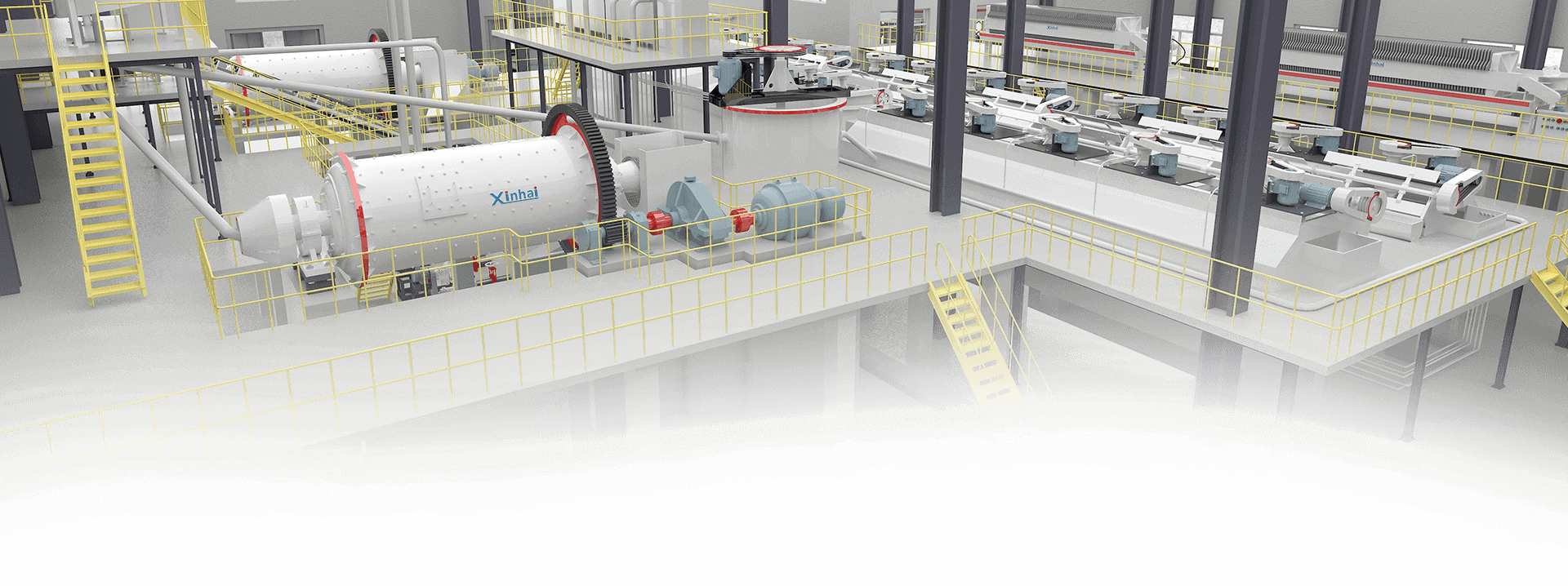
 Message
Message Chat Now
Chat Now


